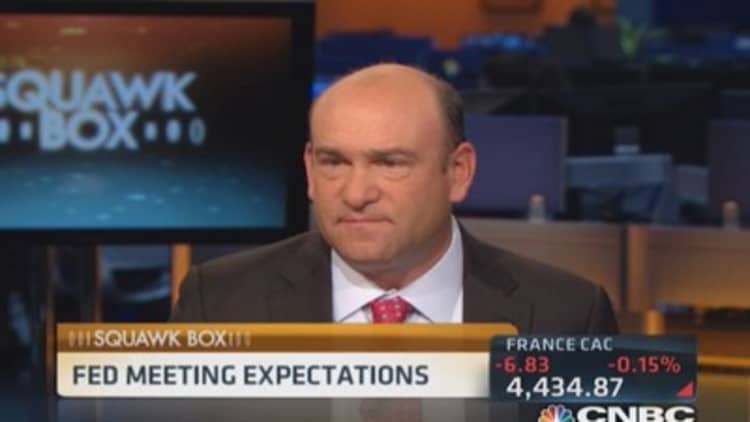Renewed sales of the were the main move on major currency markets on Tuesday, with the dollar, euro and all steady ahead of potentially more dramatic events later in the week.
The ZEW indicator of German investor confidence will provide a brief distraction from this month's dominant concerns in Europe - Scotland's vote on independence and the prospect of a clear warning of interest rate rises from the U.S. Federal Reserve.
The Aussie, generally more resistant since hitting an almost four-year low in January, has taken a hammering since the start of September, harried by the stronger U.S. dollar, poor data out of China and a slump in prices of Australia's iron ore exports.
That all adds to broad concerns about the country's ability to grow after the end of a mining investment boom and while the currency recovered briefly overnight, it was quickly back under pressure just above Monday's six-month low of $0.8984.
Read MoreECB's Weidmann signals risk for Europe's taxpayers
"It looks like there was some sort of order to sell (U.S.) dollars that went through at around 3 a.m. our time. Since then the Aussie has renewed its course," said Graham Davidson, a spot currency dealer with National Australia Bank in London.
"In general it seems to be the dollar strength that has precipitated this move but there are several factors working against the Aussie."
The Aussie was a third of a percent lower on the day in early London deals at $0.8996.
The Australian central bank, in minutes from its regular policy meeting, again cited the relative strength of the currency as a drag on the economy since it remained "above most estimates of its fundamental value".

Some bank strategists say fair value for the Aussie is around $0.85 although the central bank was making its own comments when the dollar was around $0.93.
Rock steady
Beyond the Aussie move, investors were reluctant to do much as they waited for fresh guidance on interest rates from the Federal Reserve on Wednesday.
The dollar index which hit a 14-month peak on Sept. 9 and is on its longest winning streak since 1997 was roughly unchanged at 84.285.
The euro held steady at $1.2937, hemmed in a $1.2859-$1.2980 range after a selloff sparked by the European Central Bank's interest rate cut early this month faded.
Read MoreThe Fed: On course and on the money
Keeping pressure on the ECB, the OECD on Monday urged much more aggressive stimulus to ward off the risk of deflation in a subdued euro zone.
In contrast, markets have been positioning for the Fed, after its Sept. 16-17 meeting, to signal an earlier hike in rates than investors had previously expected.
That saw the 10-year U.S. Treasury yield post its biggest rally in over a year last week, bolstering the appeal of the dollar, particularly against the low-yielding yen.
"We expect the Fed to signal that it is on course to finish bond-buying next month and to raise rates in Q2 2015," said Kit Juckes, a strategist with Societe Generale in London.
Read MoreIs 80 cents finally in sight for the Aussie?
"But we're painfully aware that's a consensus view and also, that with tomorrow's core CPI inflation expected to dip to 1.8 percent, there is no inflationary threat for the Fed to fight right now. No wonder dollar bulls are lacking conviction."

